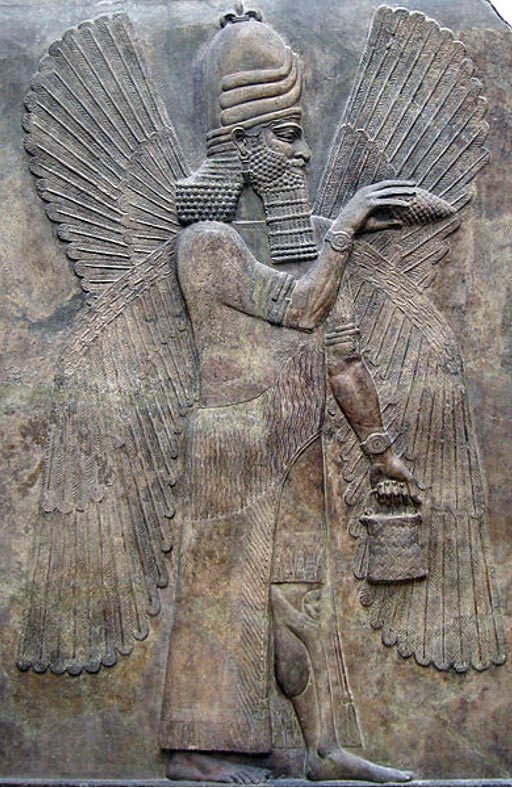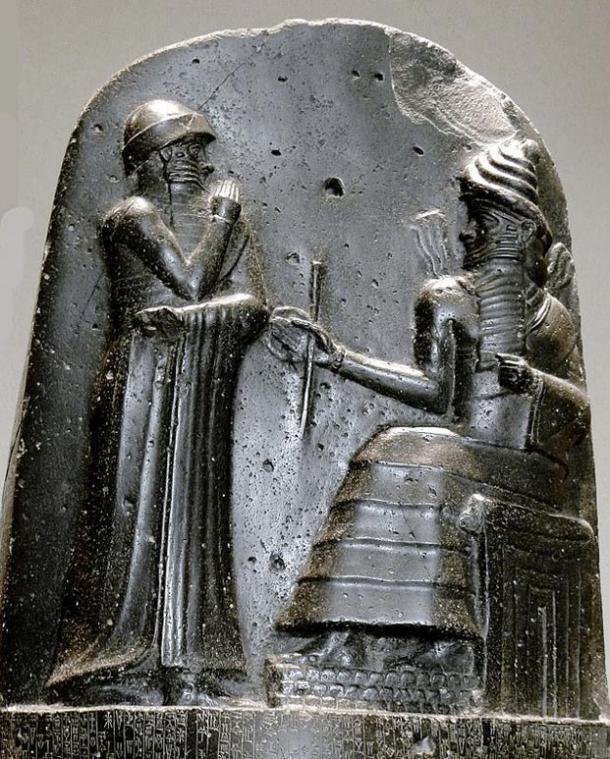The Fierce Amorites and the First King of the Babylonian Empire
The Amorites, also called Amurru or Martu, were an ancient Semitic-speaking people who dominated the history of Mesopotamia, Syria, and Palestine from about 2000 to 1600 BC. Tribal nomads who forced themselves into the lands that they needed, the Amorites were reputedly fierce warriors. They twice conquered Babylonia and Mesopotamia (at the end of the third and the beginning of the first millennium), establishing new city states; the most famous of which became Babylon. Their most noted king, Hammurabi, was the first king of the Babylon Empire.
The name Amorite literally means the “high one.” In the Mesopotamian sources from Sumer, Akkad and Assyria, Amorites appear as a nomadic people and are connected with the mountainous region of Jebel Bishri in northern Syria, called “the mountain of the Amorites.” They were an ancient tribe of Canaanites, technically not of Canaanite ethnicity, which inhabited the region northeast of the Jordan River. Amorites were apparently nomadic clans ruled by tribal chiefs, who pushed into lands they needed to graze their herds. Some Akkadian literature speaks disparagingly of them, and implies that both the Akkadians and Sumerians viewed their nomadic way of life with disgust and contempt:
“The MARTU who know no grain.... The MARTU who know no house nor town, the boors of the mountains.... The MARTU who digs up truffles... who does not bend his knees [to cultivate the land], who eats raw meat, who has no house during his lifetime, who is not buried after death...” (Chiera 1934, 58, 112).
In Egypt, the Amorites were called “Amar” and were represented on monuments with fair skin, light hair, blue eyes, curved noses, and pointed beards. They were supposedly men of great stature. One of their kings, Og, was described by Moses (Deuteronomy 3:11) as the last "of the remnant of the giants,” and whose bed was 13.5 feet (4 meters) long.

Illustration of Og’s supposed oversized bed (engraving circa 1770). Public Domain
- The Rise and Fall of Sumer and Akkad
- New breath-taking ancient temple discovered in ancient Sumeria
- 4,000-Year-Old Ancient Babylonian Tablet is Oldest Customer Service Complaint Ever Discovered
The Amorites lived in close contact with the Sumerians for a long period of time (preceding their ascendency over the region) and it’s possible they adopted elements of the Sumerian religion over several centuries. The Amorites did merge a new god into the Sumerian religion, Marduk, which they elevated to the supreme position over all the other gods. Known as the storm-god, Marduk came to assume the role of chief deity, and the story of his rise to supremacy was dramatically told in the epic myth known as the Enuma Elish. The Amorites also worshipped the moon-god Sin and Amurru.

Relief of Marduk, from Mesopotamia's heritage in Musée du Louvre. Public Domain

"The Worshipper of Larsa", a votive statuette dedicated to the god Amurru, early 2nd millennium BC, Louvre. Public Domain
Amorites wrote in a dialect of Akkadian found on tablets at the ancient city of Mari (modern day Syria) dating from 1800 BC. Since their language shows northwest Semitic forms, words and constructions, it is believed to have been a northwest branch of the Canaanite languages, whose other dialects included Hebrew and Phoenician. The main sources for knowledge about their language are their proper names which survive in non-Amorite text. Many of these names are similar to later Biblical Hebrew names. In the dark age, between 1600 and 1100 BC, the Amorite language disappeared from Babylonia and the mid-Euphrates. In Syria and Palestine, however, it became dominant and is found in ancient inscriptions which date near to the end of the second millennium BC.
The decline of the Sumerian language in Mesopotamia was also the time of the most famous Amorite invasion. The last Sumerian dynasty fell around 2000 BC and Mesopotamia drifted into conflict and chaos for almost a century afterward. Around 1900 BC the Amorites had managed to gain control of most of the Mesopotamian region. Inscriptions and tablets by the early Babylonians indicate that they occupied parts of Syria, the land east of Israel by 1900 BC. Already established in mid-Mesopotamia, the Amorites started sacking Neo-Sumerian towns, eventually conquering Babylon and making it their capital in 1959 BC. Ur, the capital of the Sumerian civilization, would survive another 9 years, until it was taken by the Elamites.
At first, the Amorites were merely an annoyance to the Ur Empire, but eventually they undermined it to such an extent that the position of last king, Ibbi-Sin, was weakened, and his subjects were able to over-throw his rule. By the time of the last days of the Neo-Sumerian Empire, immigrating Amorites had become such a force that kings were obliged to construct a 170-mile (270-kilometer) -long wall from the Tigris to the Euphrates to hold them off.
The Amorites based their capital in the city of Babylon, which was originally called Akkad, and later served as the center of their empire. For this reason, the Amorites are sometimes called the Old Babylonians and the period of their ascendancy over the region, which lasted from 1900-1600 BC, is called the Old Babylonian period. The Amorites established their authority as the absolute Arabian / Semitic dynasty by crushing the Elamites, and starting the short-lived Babylonian Empire. They were ruled by their King Hammurabi from 1792 to 1750 BC. He was best known for the set of laws called Hammurabi's Code, which constitute one of the earliest surviving codes of law in recorded history. With his death in 1750 BC, the empire disintegrated into smaller city states ruled by weaker kings.
- Ancient Persian Inscriptions Link a Babylonian King to the Man Who Became Buddha
- The origins of human beings according to ancient Sumerian texts
- The Great Ziggurat of Ur
In northern Mesopotamia, both the Amorites and Babylonians were driven from Assyria by Puzur-Sin a native Akkadian-speaking ruler, circa 1740 BC. Around the same time, native Akkadian speakers threw off Amorite Babylonian rule in the far south of Mesopotamia. Babylon proper survived for another 100 years.

The top of a basalt stele, “Code of Hammurabi”. Hammurabi (standing), is depicted as receiving his royal insignia from Shamash. Hammurabi holds his hands over his mouth as a sign of prayer. Circa 1792 - 1750 BC. Wikimedia Commons

The entire “Code of Hammurabi” stele. Louvre Museum, Paris. Wikimedia Commons
In 1659 BC, the technologically-advanced Hittites conquered Babylon. After its fall, the Amorite dialect disappeared and was replaced by an Assyro-Akkadian dialect, interrupting the gap between Old and Neo-Babylonian and clearly showing that the East Canaanites had disappeared from Mesopotamia. In the later second millennium BC, the Amorites migrated or were pushed westward toward Canaan. There, the Israelites treated them as enemies and left several records of their defeat by Israelite heroes such as Joshua. The Amorites disappeared from the historical record as a distinct population group around the sixth century BC.

“The Victory of Joshua over the Amorites”, painting circa 1625-1626. Public Domain
Featured image: “A compilation of the glass and faience inlays depicting the traditional enemies of Ancient Egypt, found at/by the royal palace adjacent to the temple of Medinet Habu, from the reign of Ramesses III (1182-1151 B.C.) Representations are (in order) a pair of Nubians, a Philistine, an Amorite, a Syrian and a Hittite. Found at by the royal palace adjacent to the temple of Medinet Habu, from the reign of Ramesses III (1182-1151 B.C.)”. Wikimedia Commons
References
"The Amorites Were Not Canaanites and Their Origin Is Unknown." Phoenicia.org. [Online] Available at: http://phoenicia.org/amorites.html
Hooker, Richard. "Amorites." Richard-Hooker. [Online] Available here.
"Who Are the Amorites?" GnosticWarrior. September 22, 2013. [Online] Available at: http://gnosticwarrior.com/amorites.html
"Amorites." Http://history-world.org. [Online] Available at: http://history-world.org/amorites.htm
"Amorites." Crystalinks. [Online] Available here.
"Amorite." Encyclopedia Britannica Online. [Online] Available at: http://www.britannica.com/topic/Amorite
"Amorites." New World Encyclopedia. [Online] Available at: http://www.newworldencyclopedia.org/entry/Amorites
Read more: http://www.ancient-origins.net/history-important-events/fierce-amorites-and-first-king-babylonian-empire-003269#ixzz3s2I0IPii
Follow us: @ancientorigins on Twitter | ancientoriginsweb on Facebook

No comments:
Post a Comment